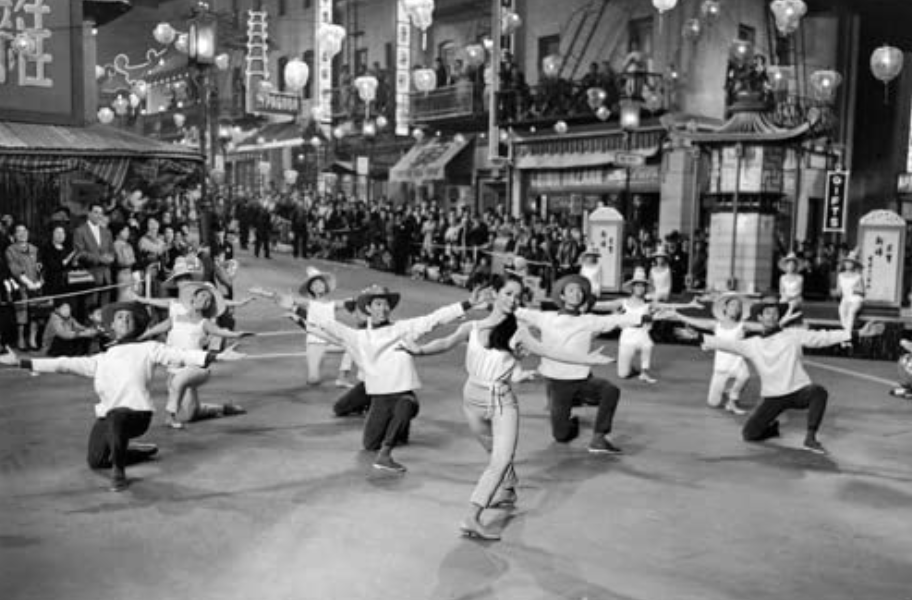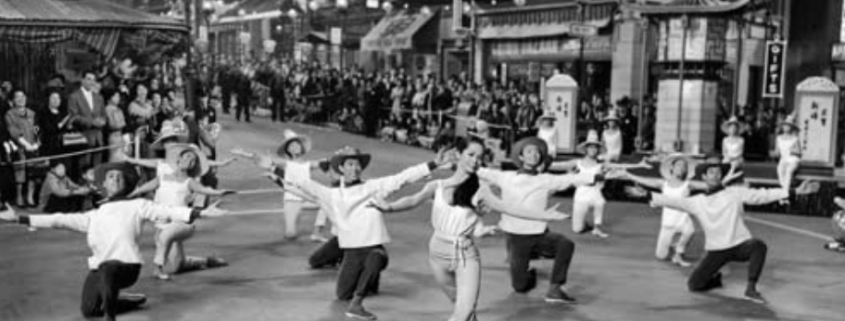Soft Power: Popular culture’s representations of Chinese identity reinforce Sinophobia

Last semester, for my final paper in my “Postwar Hollywood” class, I wrote about “Flower Drum Song” and representations of Chinese identity and the immigrant woman. It was something very close to my heart as a Chinese American, because at its core, “Flower Drum Song” is a politicized rendering of Chinese American identity at the intersection of race and gender.
“Flower Drum Song” focuses on the story of Mei Li, who comes to the United States as an undocumented immigrant. She’s submissive and docile, a representation of “China.” It’s why later in the film, she becomes open to “assimilation,” viewed as a positive process. Mei Li is quiet and vulnerable, but she has the American dream. In the film, this process of “Americanization” consumes her entire identity.
I’m thinking about this, about Asian women being viewed as objects, because last week, six Asian women were shot at three spas in Atlanta, Georgia. The accused gunman was a white man who perceived these women as a platform for him to project his aggression onto, describing the massage parlor as a “temptation he wanted to eliminate.”
Anti-Asian hate is nothing new. There’s an external pressure to talk about anti-Asian racism in the United States as an Asian person and serve as “spokesperson” on this issue in white spaces. I’m arguing against that. Instead of merely tokenizing and uplifting Asian scholars and leaders when a hate crime happens to the community, I invite everyone and anyone to care about Asian people on a regular basis — not just because it’s “timely.”
I also invite everyone to think critically about the media we consume, more specifically how Sinophobic representations popularized in the media and by the media have contributed to the history and current legacies of anti-Asian hate.
I don’t think it needs repeating that for the past year, there has been deeply racist rhetoric about China and Chinese people. I’m not just talking about the “Chinese virus” or “China virus,” because those have already been cited many times. I’m talking about the decline in U.S.-China relations, The Wall Street Journal op-ed published last year calling China the “sick man of Asia.” I’m looking at the long history of Chinese people in the United States and Chinatowns racialized as diseased, Western imperialist propaganda.
I’m talking about the incredibly powerful thread Ian Goodrum posted on Twitter chronicling visual representations of China. Sinophobia is the image of an angry red dragon looming over an “American” college campus in Foreign Policy. It’s the picture of a globe covered by a face mask in the image of a Chinese flag on the cover of The Economist.
These representations tell us that China is a threat, but they also attach a racialized stigma to the Chinese and, more broadly, Asian identity, which has so often been subject to political, cultural and social suspicions. Consciousness of racism requires consciousness of how it’s embedded in popular imagery.
I was originally going to discuss the blatantly racist tropes of Asian people in Hollywood, such as the villainous Chinese Fu Manchu in “The Face of Fu Manchu” or the uncool Asian caricature Long Duk Dong in “Sixteen Candles.” To be honest though, those are old and trite versions of racism, and I’m tired of talking about them.
Anti-Chinese and, more broadly, anti-Asian racism occurs in more than one singular racist representation in a film, but in the entirety of popular culture. It doesn’t even have to be the most obvious ones.
As many Asian American writers have discussed, racism against Asian women requires an intersectional approach. Jezz Chung tells us in “The Lily” that racism can be subtle, such as the fetishization and sexualization of Asian women in “Memoirs of a Geisha” or “Madame Butterfly.”
To Chung, racism is about the power and politics of representation. To me, racism is when Asian women and women of color, who are the victims of hate crimes, become nameless people in articles that spend more time humanizing the perpetrator than the individual victims themselves. Even when these names are mentioned, they should be respected — spelled correctly in news coverage and properly pronounced by broadcast news anchors.
A few weeks ago, my mother’s car, parked next to a Chinese supermarket in a predominantly Asian American neighborhood, had its window shattered. To be honest, I don’t know if it was an anti-Asian hate crime, or if I could claim that it was “racially motivated” when asked. Yet as I stood there, looking at the tiny glass shards scattered in the passenger’s seat where I was supposed to sit, I couldn’t help thinking about the political context that had potentially informed it.
Later, I thought about the part in “Flower Drum Song” when the love interest Wang Ta sings to Mei Li.
“You are beautiful, small and shy,” he tells her. Mei Li can only look at him demurely.
Racism makes Asian women into beautiful, small and shy objects for white men to project their aggression or fantasies on. It can be in films like “Flower Drum Song,” where the Chinese woman is either sexy (Linda Low) or submissive (Mei Li). It occurs when Mei Li’s Chinese-ness is exotified, patronized and implied to represent China. It’s when the core of Mei Li’s very identity becomes a negative trait ready for “Americanization.”
Most importantly, though, racism is when Mei Li, an Asian woman, is so pliable, so malleable that she becomes a concept more than a person. To me that’s the most dangerous part, because it’s also when she begins to have no identity at all.
Valerie Wu is a sophomore writing about the arts and pop culture in relation to her Chinese American identity. Her column, “Soft Power,” runs every other Monday.

